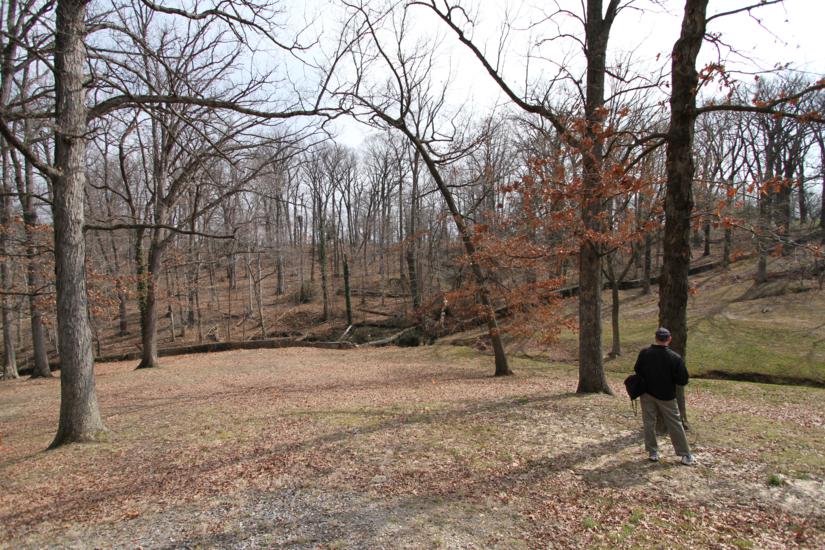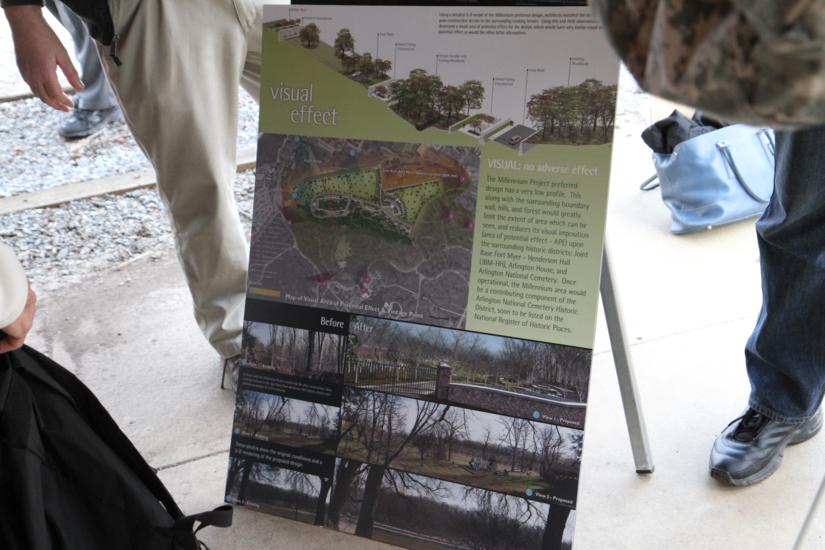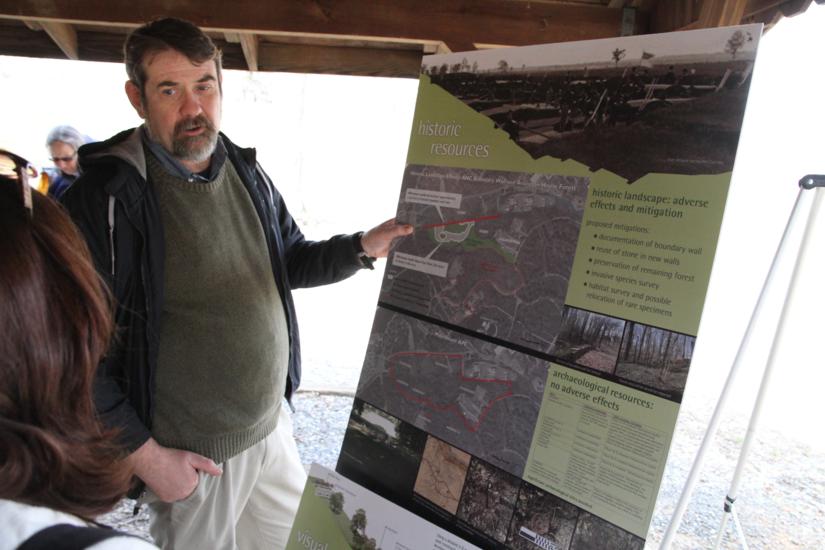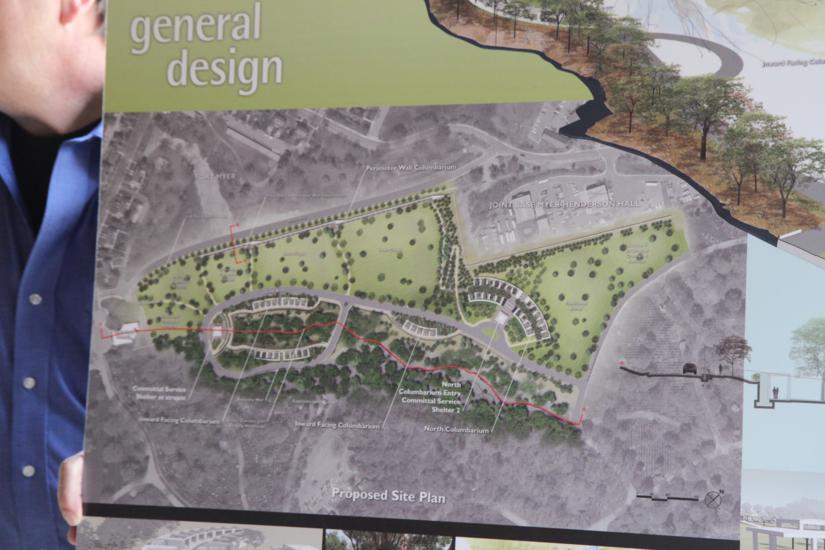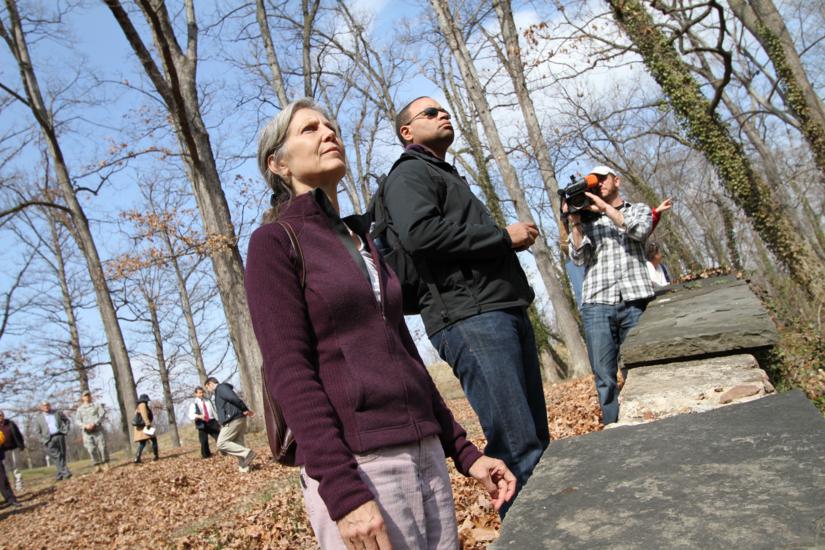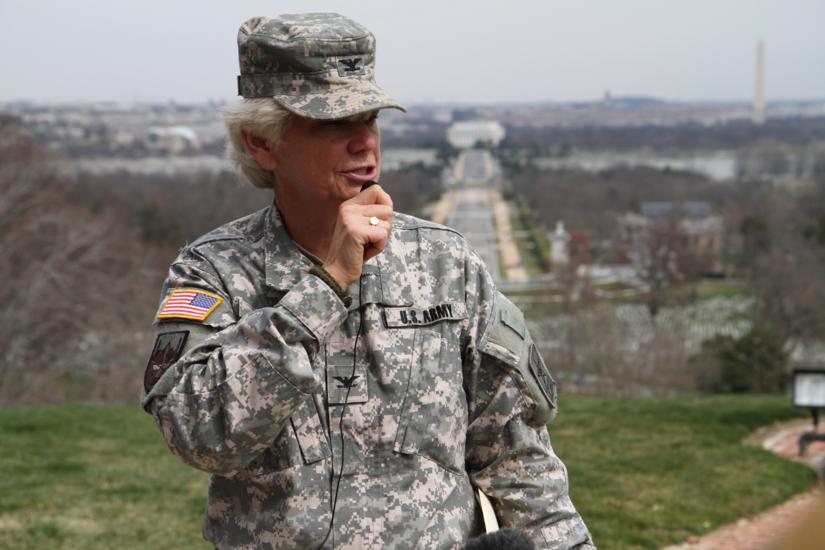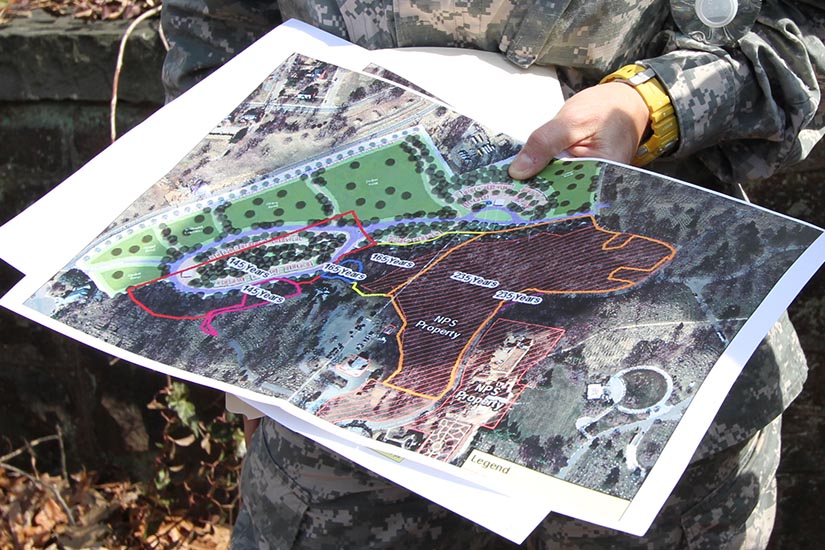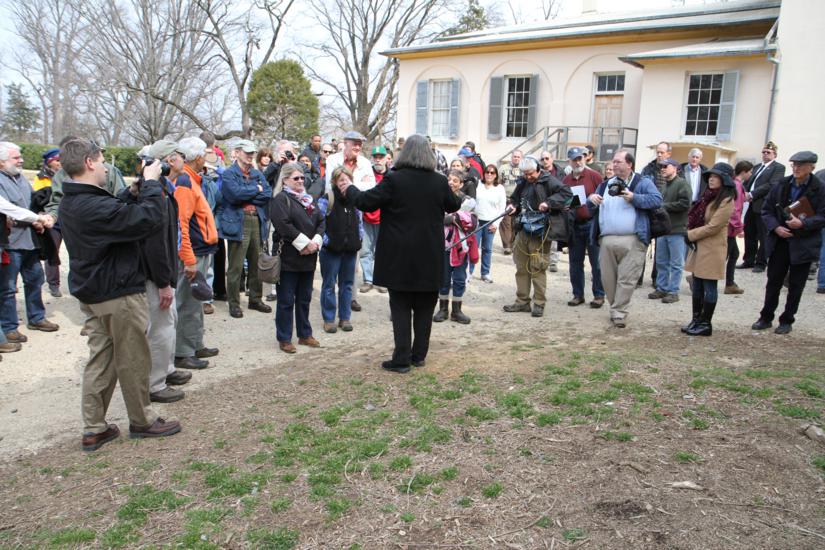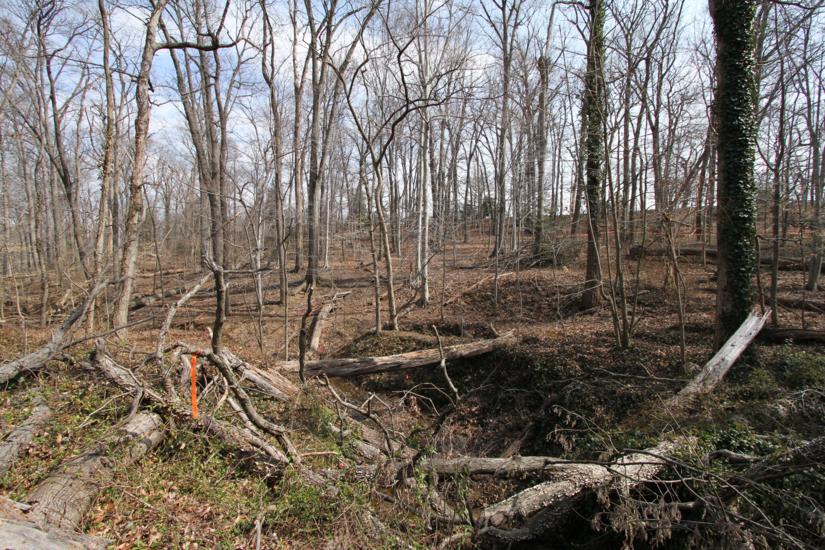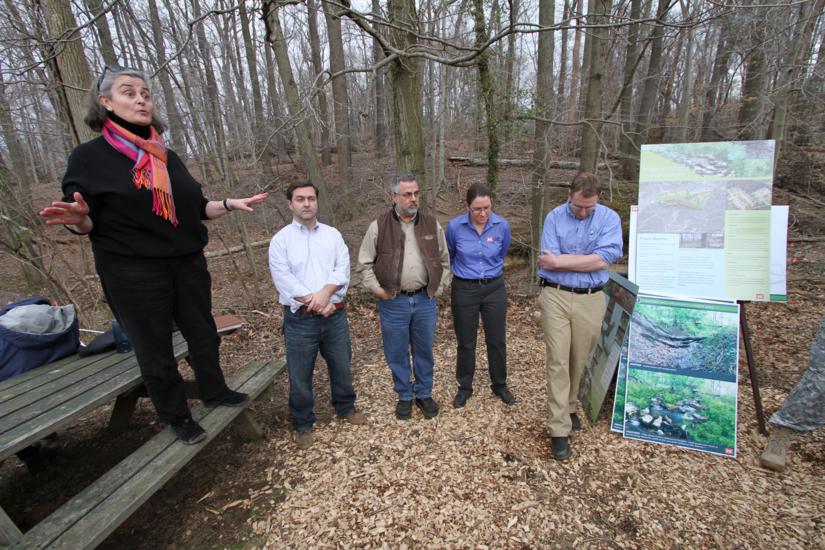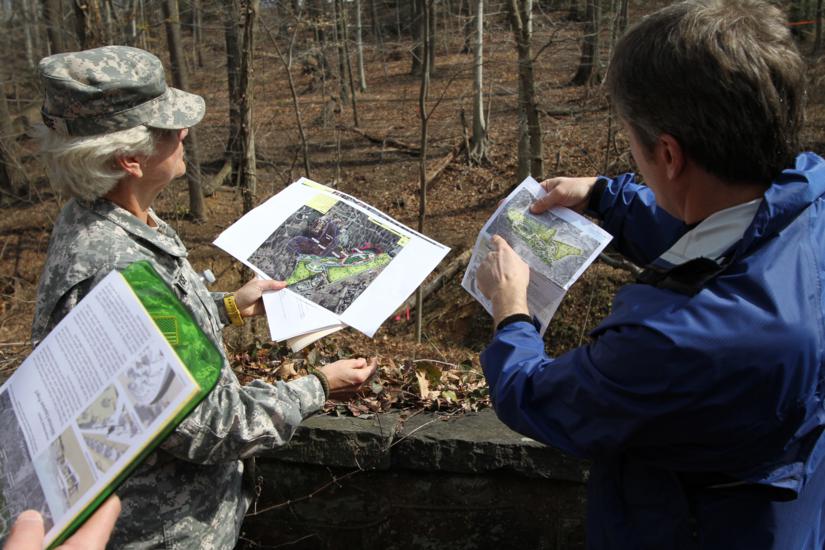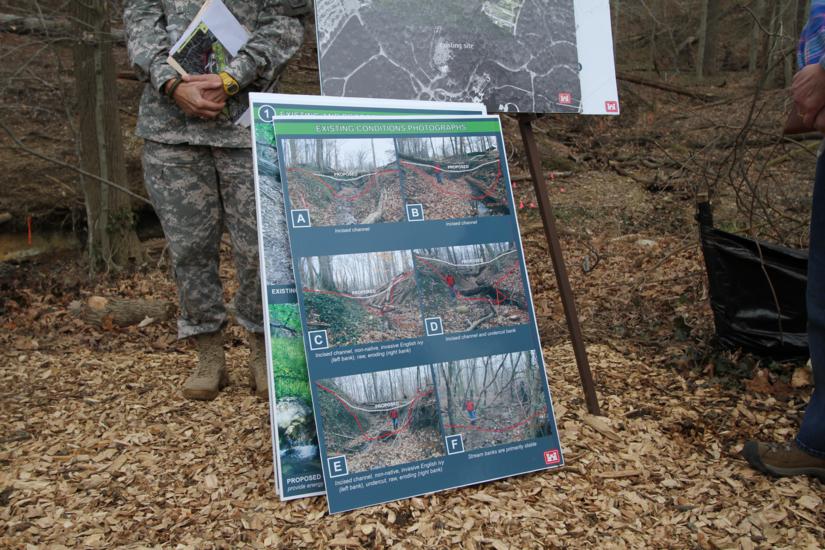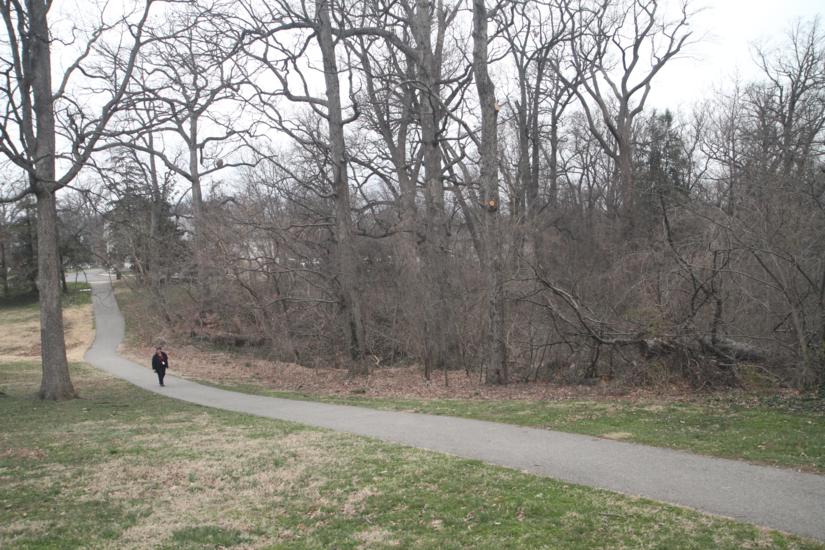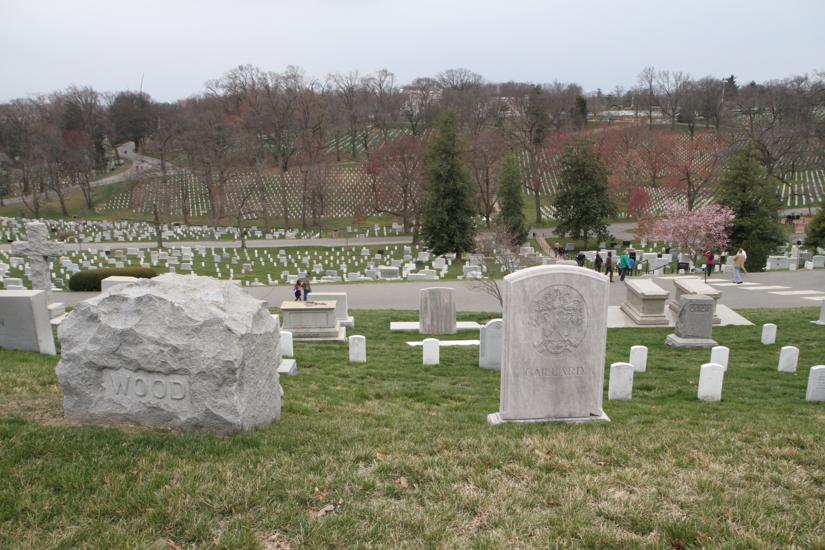Barring an act of Congress, a planned expansion of Arlington National Cemetery will move forward, despite the objections of some residents who say the plan will cut down too many trees and destroy a natural habitat.
Cemetery leaders and the Army Corps of Engineers, which designed the expansion plan, held an open house and site visit last Saturday to brief residents about the recently-updated plan, show them the site, and listen to their comments. The comments were mostly critical.
“There will be 800 trees taken down. That’s a really big loss for the community,” said one resident who declined to provide her name. “I think there would be lots of veterans who would like to be in a place where the birds are singing and creating nests.”
The Millennium Project, as the plan is called, will expand the cemetery’s burial space to a sloped parcel of undeveloped land adjacent to Fort Myer. The expansion is necessary, officials say, because the cemetery could run out of burial space within 12 years.
More than 700 native trees and nearly 70 dead and invasive trees will be removed, though the Cemetery plans to replant 600 trees as part of the project. Between in-ground burial spots and niche spaces in columbariums, the land is expected to provide a final resting place for up to 30,000 military veterans and their spouses.
Critics of the plan say that the loss of older, mature woodlands will have an outsized impact on the natural habitat, given that much of the rest of Arlington County is urbanized. Such older woodlands would take generations to replace, essentially making them “irreplaceable,” said critics, including members of several citizen groups like the Arlington Urban Forestry Commission.
Cemetery officials, however, say that the land was clearcut during the Civil War and that most of the trees are 50-100 years old, with the oldest at about 145 years old — not meeting the true definition of an “old growth” forest. Further, they say that clearing out the invasive species that have taken root in the current woodlands will provide a better environment in the long run, as the replanted trees grow and mature.
The plan presented last weekend was actually a more environmentally-sensitive revision of a cemetery expansion plan from 2006 that would have clearcut the land and filled in a stream that runs down the middle of it. Instead, the stream will be preserved, the trees adjacent to the stream will be saved, and a small grove of trees in the middle of the land will also be saved, for aesthetic purposes.
Critics of the plan said there are better options than cutting down a mature woodland. Options suggested included clearing invasive species and using the woodland as a place for loved ones to scatter ashes after cremation; converting one of the Pentagon’s parking lots into burial space; limiting expansion of the cemetery to the Navy Annex site; and accelerating the creation a new national military cemetery.
“Long term, you’re going to have to move off anyway and do this sort of thing elsewhere,” said Arlington resident and conservationist Mark Haynes. “Arlington has so little in terms of woods left… why take this now? Leave this here as part of the hallowed ground. You’ve got plans for the long term anyway, why not start them now?”
Haynes’ suggestion echoed that of Rep. Jim Cooper (D-Tenn.), who in 2011 wrote an op-ed that called for the creation of up to two new national cemeteries, in lieu of the Millennium Project. Cooper said the Millennium Project’s sloping land, at the cemetery’s western edge, is “unfit for burials.”
Another suggestion was floated by civic activist and Arlington resident Bernie Berne.
“The Pentagon can honor their veterans by giving up their land and saving the trees,” he said. “Maybe people would appreciate the military a little more than they do now. It’s nice to talk about honor and waive the flag, it’s another to say the Pentagon won’t give up their parking spaces for an expansion of Arlington National Cemetery. It’s pretty obvious that could be done.”
Later, Berne acknowledged that the Millennium Project is unlikely to be stopped unless Congress can be swayed to reverse the 2001 law that transfered the project land from the National Park Service to the Army, for the express purpose of providing burial space.
“There’s no stopping this under current law,” he said. Berne and other critics of the plan say they’ve been trying to lobby Sen. Tim Kaine’s (D-Va.) office to support their cause.
Not everybody at Saturday’s event agreed that trees should be given priority when it comes to Arlington National Cemetery, however.
“For every tree you remove it’s going to allow 30 grave sites — areas for the mothers and fathers of the sons and daughters who died in battle for this country to have final closure with their loved ones in Arlington National Cemetery,” said Marty Callaghan, a Navy veteran and American Legion member. “So for every tree gone, 30 families can be at rest and see their loved buried with full military honors.”
“I understand that the community is interested in knowing what the impact to the environment will be,” Callaghan told ARLnow.com. “On the other side of the coin, you have veterans… and their families, who really value Arlington National Cemetery. While that might have been a minority view expressed today, there are a lot of patriots in America who are really behind this project, I would imagine.”
In addition to creating new burial space, the Millennium Project will also result in the restoration of a stream located in the “Arlington Woods,” a wooded area of the cemetery that’s not otherwise part of the project, and the replanting of a parcel of land that had been cleared to create a maintenance yard. At least one critic called the stream restoration plan “greenwashing” — an effort to make the project look more environmentally-friendly than it actually is.
At the current pace of interments (20-30 per day), the Millennium Project is expected to allow an additional 7-12 years of funerals at Arlington National Cemetery. Between a new 20,000-niche columbarium currently under construction, the Millennium Project, and the proposed expansion of the cemetery to the Navy Annex site off Columbia Pike, Arlington National Cemetery could still be hosting military interments up to 2060, according to the cemetery’s chief engineer, Col. Victoria Bruzese, who led Saturday’s site visit.
(The interments of military spouses could continue until 2100, Bruzese said. The Navy Annex expansion hasn’t yet entered the planning and design phase but preliminary estimates suggest it will provide 50,000 to 60,000 additional burial and niche spaces.)
Col. Buzese said that while a new national cemetery is likely to be established at some point, it cannot fully replace Arlington.
“There will never be another Arlington National Cemetery,” she said. “There’s something about this place that makes it special. There might be more national cemeteries, but there won’t be another Arlington.”
The Millennium Project is expected to be completed by 2020.



